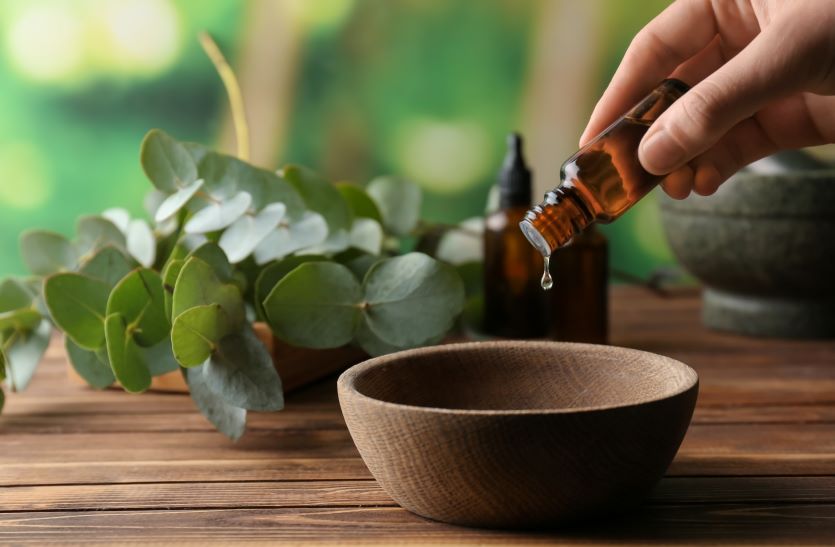There’s a good chance you spend most of your time at home. It’s where you cook, sleep, eat, cozy up with a good book, and, possibly, work. And, for many people, the COVID-19 pandemic has made this all the more true.
No matter how much time you spend at home, however, one thing remains true: home should be a place where you can recharge and relax. It’s place where you can give your body and mind the rest they need. To do this, it’s crucial to create and maintain a healthy living environment.
There’s more to this task than you might think. Creating a healthy and clean living environment requires attention to nearly every aspect of your home. Here’s the good news: you can take it one step at a time! There’s no need to implement all of these tips at once.
What Constitutes a Healthy Living Environment?
When it comes to health, there’s a lot more to consider than your physical health. (Though physical health does, of course, play a big role in your overall health and well-being.) You also need to watch out for your mental and emotional health. And though you may not expect it, each of these facets of health comes into play when creating a healthy living environment.
So what exactly does that mean?
Nearly everything in your surroundings affects you in one way or another. Sometimes the slightest sensory detail—a persistent sound or odor—can introduce stress into your life, often subconsciously. When you’re out and about, you don’t have much control over your environment. At home, however, you have the ability to control many aspects of your surroundings. And exercising that control is crucial to creating a healthy living environment.
To create a clean, healthy living space, you’ll need to declutter. And no, this doesn’t mean simply tidying up around the house—although that’s a great start. You need to declutter physically and mentally, removing objects, messes, sounds, and even smells that could introduce stress into your life.
In other words, it’s all about being intentional with various aspects of your surroundings. A healthy living environment is made up of the sights, sounds, and smells that enable you to relax, recharge, and be your fully healthy self.
Neat and Tidy: The Physical Side of a Healthy Living Environment
As you try to create a healthy living environment for yourself, what better place to start than the basics? Save the sounds, smells, and other less tangible aspects of your house detox for later. Start with the messes you can actually touch.
Clutter—whether it’s dishes piled in the sink or toys strewn across the floor—can be visually unappealing. But it also takes a toll on your mental well-being. These types of messes are tripping hazards and constant visual reminders of what needs to be done. As the objects pile up, so does your stress.
Kitchen clutter also poses several other risks. By leaving food, moisture, and other kitchen debris in the open, you roll out the red carpet for mold, bacteria, and pests—all of which reduce the cleanliness of your living environment.
So by taking the time to do the dishes or clear your coffee table, you’re helping create a clean living environment for yourself, both mentally and physically. As you do these tasks, you might be surprised at how cathartic they feel. This is common. An added benefit of cleaning is that it can help reduce stress!
Harnessing Your Senses: How Sight, Sound, and Smell Impact Your Environment
Your senses—sight, sound, taste, touch, and smell—allow you to interact with your environment. Naturally, you’ll want to consider your senses as you cultivate your healthy living environment. (Unless you live in an actual gingerbread house, taste doesn’t really come into play here.)
Sight, as mentioned above, can greatly impact your stress levels. Does your house look clean? If the answer is yes, you can check that off your list.
Once again, it’s all about being intentional. Are you cutting out unwanted smells and replacing them with calming, desirable odors? And are you subjecting yourself to detrimental sounds or pleasant, soothing ones? The answers to these questions can help you establish your clean and healthy living environment.
Noise Pollution and Healthy Sounds in Your Home
Unwanted or excessive noise—also known as noise pollution—seems to be an inevitable part of life. And this means noise pollution will likely affect you in your home. Whether it’s the upstairs neighbors vacuuming at midnight or the early morning construction down the street, you can’t fully escape intrusive sounds.
At their best, these unwanted sounds are simply annoying. At their worst, they can start to impact your physical and mental health.
When you’re exposed to noise pollution for extended periods of time, volumes as low as 60 decibels (which is roughly equivalent to the background noise in a busy restaurant) can start to take a toll on your ears, blood pressure, and stress levels. If the baseline volume of your home is around that level, you might find it difficult to fall, and stay, asleep at night.
So what can you do about it?
Not all noise is created equal. To help foster a healthy living environment, you should try to limit the negative, stress-inducing sounds in your home and introduce positive, relaxing noise in their place. This might mean buying thicker curtains to dampen external noise, or investing in a quieter air conditioner. Your solution can be as simple as playing classical music or nature sounds in your living room to cover up the noise.
Aromatherapy and the Power of Smells to Freshen Your Healthy Living Environment
Smell can be a powerful and underappreciated tool. The human nose can detect an incredible number of distinct smells—some good, some bad. Unpleasant odors in your home may indicate areas in need of a cleaning, especially in the bathroom or kitchen. If the bad smells persist, it may be indicative of a larger problem, such as a mold spot. Removing and preventing mold is crucial in maintaining a clean environment.
As with sounds, not all smells are negative. Some scents can have a soothing, refreshing effect. Purchasing a few houseplants can introduce a slightly woody, outdoorsy smell to your home that may help relieve stress. Houseplants can also help clean the air in your home, so it’s a win-win!
Something as simple as cracking a window can also do wonders for your home environment. An open window creates better air circulation, keeping your home smelling and feeling fresh.
If you want to take the power of smell a step further, you can experiment with air diffusers and aromatherapy. Air diffusers help spread the scent of essential oils throughout your home, allowing you to be extra intentional with the smells you take in each day.
Cultivating a Healthy Mental Environment
Cleaning and detoxing your physical home environment is a great first step, but it shouldn’t be your last. Your mental environment also deserves attention, too.
“Decluttering” the mind might seem like a strange concept at first, but think about the various environments you encounter on a day-to-day basis. Between work, the media you consume, friends, and relationships, your mind processes a lot of information each day. It also deserves a break—a good long exhale.
There are a number of ways you can declutter your mind and give it a rest. The process looks a little bit different for everyone, though. Exercise, meditation, and even house cleaning can be great ways to empty your mind and release some of the stress from the day. You can find your own way to unwind through trial and error.
Diligence and Forgiveness: Maintaining a Healthy Living Environment
A clean and healthy living environment looks a little bit different for everyone. You might care a lot about physical cleanliness and spend hours tidying up each week. Your neighbor might neglect their physical surroundings but carefully maintain a clean mental environment. And that’s OK! You don’t need to be perfect. Focus on the elements of your environment that matter the most to you and branch out from there.
And remember, maintaining a healthy living environment takes work and diligence. So if you find yourself slipping in one area, forgive yourself and move on. There’s always tomorrow to start again.
References























